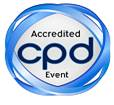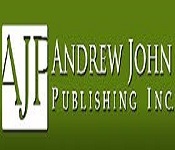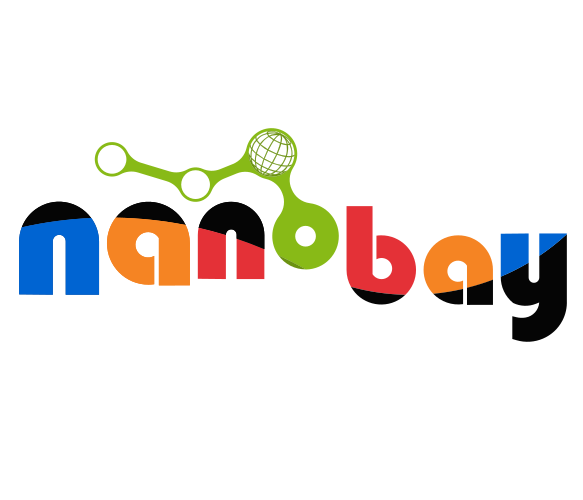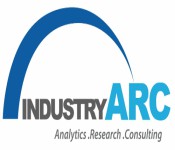Sessions / Tracks
Track 1: Regulation of Nanotechnology
Because of the ongoing argument on the implications of nanotechnology, there is important debate concerning whether nanotechnology or nanotechnology-based products quality special government regulation. This mainly relates to when to evaluate new substances prior to their release into the community, market and environment. Nanotechnology refers to an cumulative number of commercially existing products – from socks and trousers to tennis racquets and cleaning cloths. Such nanotechnologies and their associated industries have triggered calls for enlarged community participation and effective regulatory arrangements.
Track 2: Regulation of Nanotechnology in Consumer Products
Nanotechnology has become global. Nanocomponents in various products are already on the market and their figure is growing fast. Within the last fourteen months the number of listed nano-products became more than double. The product record of the Woodrow Wilson Center currently lists 580 products supposed to contain nanocomponents compared to 212 in March 2007. Assuming that the numbers show a representative growth of products, we are currently facing remarkably developing market-potentials in different branches. Looking at the different kinds, the Health & Fitness sector lists 356 products and contributes with more than 60% to the whole market.
Track 3: Nano Toxicology
Nanotoxicology is the combinational study of the toxicity of nanomaterials. Due to quantum size effects and large surface area to volume ratio, nanomaterials have distinct properties compared with their larger counterparts. Nanotoxicology is a branch of bionanoscience which includes the study and application of toxicity of nanomaterials. Nanomaterials, even when prepared of inert elements like gold, become highly active at nanometer dimensions. Nanotoxicological studies are planned to determine whether and to what level these properties may pose a risk to the environment and to human beings. For example, Diesel nanoparticles have been studied to harm the cardiovascular system in a mouse model.
Track 4: Environmental Impact of Nanotechnology
The environmental impact of nanotechnology is the potential effects that the use of nanotechnological devices and materials will have on the environment. As nanotechnology is an developing field, there is great debate regarding to what extent commercial and industrial use of nanomaterials will affect organisms and ecosystems. Nanotechnology's environmental impact can be divided into two aspects: the potential for nanotechnological revolutions to help in improvement of the environment, and the possibly novel category of pollution that nanotechnological materials might cause if released into the environment.
Track 5: Health Impact of Nanotechnology
The health impacts of nanotechnology are the potential effects that the use of nanotechnological devices and materials will have on human health. As nanotechnology is an emergent field, there is great discussion regarding to what extent nanotechnology will benefit or pose risks on human health. Nanotechnology's health impacts can be divided into two aspects: the potential for Nano technological revolutions to have medical applications to cure disease, and the potential health hazards pretended by exposure to nanomaterials.
Track 6: Societal Impact of Nanotechnology
Beyond the toxicity hazards to human health and the environment which are related with first-generation nanomaterials, nanotechnology has wider societal impact and poses broader social challenges. Social scientists have advised that nanotechnology's social issues should be agreed and evaluated not simply as "downstream" risks or impacts. Rather, the challenges should be factored into "upstream" research study and decision-making in the direction to certify technology development that meets social objectives.
Track 7: Risks Assessment and Management of Nanotechnology
Studies of the health effect of airborne particles usually shown that for toxic materials, smaller particles are more toxic. This is due in part to the fact that, the same mass per volume, the dose in terms of constituent part numbers rises as particle size decreases. Based on available data, it has been claimed that current risk assessment methods are not suited to the hazards related with nanoparticles; in particular, existing toxicological and eco-toxicological procedures are not up to the task; exposure evaluation needs to be conveyed as quantity of nanoparticles and surface area relatively than simply mass; tools for routine detecting and evaluating nanoparticles in air, water, soil is inadequate; and very tiny is known about the physiological replies to nanoparticles. Regulatory bodies in the U.S. as well as in the EU have determined that nanoparticles form the potential for a completely new risk and that it is essential to carry out an extensive study of the risk. The challenge for regulators is whether a matrix can be advanced which would recognize nanoparticles and more complex Nano-formulations which are expected to have special toxicological properties or whether it is more practical for each particle or formulation to be tested separately.
Track 8: Nanomaterials- Challenges and Opportunity
It is usually acknowledged that Nanotechnology offers very favourable possibilities. It will, as a horizontal or qualifying form of technology, enter all industrial sectors in the medium term. Nanotechnology offers an huge potential for innovation and development. In addition to this, nanotechnology also has an huge potential to improve the environment through green chemicals and the sustainable use of resources. How we use the existing natural resources has an effect on our health and the environment. In addition to the questions about risks and protection of nanomaterials, the feature of green nanotechnology needs to be promoted. Technological development is a key function in terms of the advancement of an efficient use of resources; nanotechnology offers multiple possibilities in this field. It can also have positive special effects on workplace safety and health protection.
Track 9: Nanotechnology: Cosmetic and Sunscreen Safety
Many recent cosmetic or sunscreen products have nano-sized components. Nanoemulsions are transparent and have distinctive tactile and texture properties. Nanocapsules, nanosomes, niosomes or liposomes are minor vesicles consisting of traditional cosmetic materials, and are mostly used to defend lightor oxygen-sensitive cosmetic ingredients. Vesicle materials do not pierce human skin beyond the superficial layers of the stratum corneum. When compared with the skin penetration of ingredients in traditional formulations ,nano-sized formulations may enhance or reduce penetration, albeit at a limited order of magnitude.
About Conference
On this auspicious occasion, ConferenceSeries Ltd inviting the participants from all over the globe to take part in the World Congress on Regulations of Nanotechnology at Chicago, USA during July 11-12, 2017.
The theme of the conference “Enhancing Effective Execution of Nano Regulations” highlights the interdisciplinary nature of Nanotechnology. Scientific Tracks designed for this conference will enable the attendees and participants to learn extremes.
Importance & Scope:
The field of nanotechnology have not only helped the development in different fields in science and technology but also contributed towards the improvement of the quality of human life to a great extent. All this has become possible with the different discoveries and inventions leading to the development of various applications. The core aim of Nanoregulations 2017 conference is to provide an opportunity for the delegates to meet, interact and exchange new ideas in the various areas of Nanotechnology.
Why to attend?
Nano Regulations tiles a platform to globalize the research by installing a dialogue between industries and academic organizations and knowledge transfer from research to industry. Nanoregulations-2017 aims in proclaim knowledge and share new ideas among the professionals, industrialists and students from research areas of Nanotechnology to share their research experiences and indulge in interactive discussions and special sessions at the event.
Target Audience:
-
Eminent Scientists/Research Professors,
-
Junior/Senior research fellows,
-
Students
-
Directors of companies
-
Engineers
-
Members of different Nanotechnology associations.
Come be a part of it…
Market Analysis
World demand for nanomaterials will rise more than two-and-a-half times to $5.5 billion in 2016. Nanotubes, nanoclays and quantum dots will be the fastest growing types. The energy storage and generation and construction markets will offer the best growth prospects. China, India and the US will lead gains among countries.
This study analyzes the $2 billion world nanomaterial industry. It presents historical demand data for the years 2001, 2006 and 2011, and forecasts for 2016 and 2021 by material (e.g., metal oxides, chemicals and polymers, metals, nanotubes), market (e.g., health care, electronics, energy generation and storage, construction), world region and for 15 countries.
The study also considers market environment factors, details industry structure, evaluates company market shares and profiles 119 industry players, including Arkema, BASF and Bayer.
Along with the increasing market trend of nanocomposited food packaging has come an increase in public concern over possible harm to human health. Many research studies have demonstrated the probable migration behavior of nanomaterials from the polymer matrix, but some experimental studies have demonstrated that the migrated quantity is quite low in relation to other migration rates. However, most of these studies were conducted with food simulants, and testing with real foodstuffs remains insufficient. With undefined toxicity level of nanoparticles, the lack of knowledge on human health effects and risk assessments may restrict the number of nanomaterial consumption in the food-related applications. Publishers and media outlets use their channels to communicate with consumers and provoke governmental agencies with regard to the national regulation of nanomaterials in food packaging. Although, the USA is a leading country in the development of nanomaterial safety resources for food and food packaging, a definite regulatory approach to nanotechnology in FCSs by the USFDA is still in progress. Besides, the latest European Union legislation on nanomaterial safety published in 2014 does not yet cover nano-enabled food packaging. Each national government needs to address this issue, and more importantly, to take action for international cooperation in the pursuit of nano-safety alarming system since nanoparticles may well be difficult to detect in imported packaged goods that transfer from nation to nation. Legislation and guidelines should be developed and enacted to protect public health from the spread of nanomaterials in food-related applications and therefore, this issue should be addressed in the international planning policy framework.













